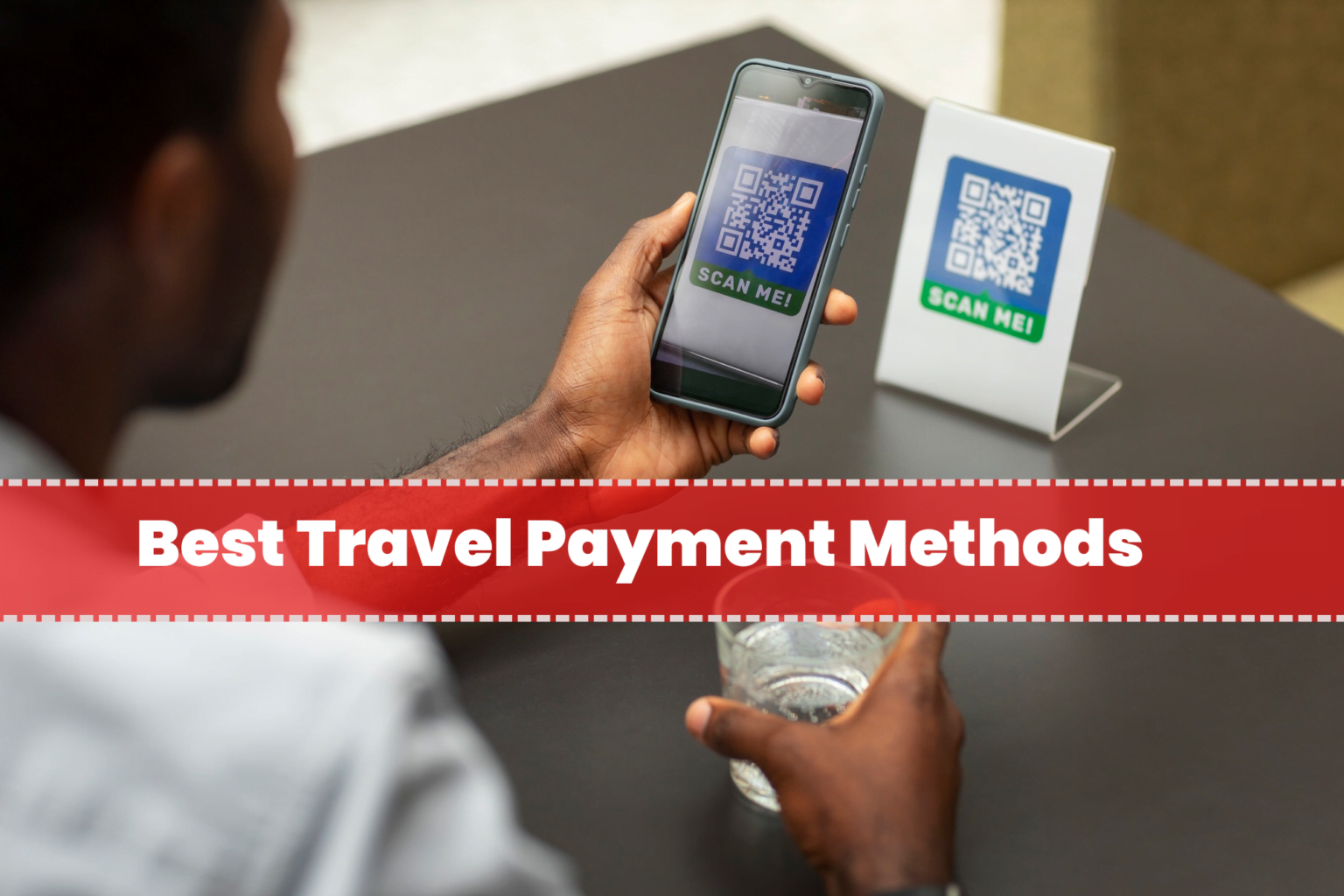Introduction
When embarking on international travel, one of the essential considerations is how to manage your finances while abroad. The choice of payment method can significantly impact your convenience, security, and overall travel experience. In this discussion, we will explore various options for paying for goods and services when traveling abroad, each with its advantages and drawbacks. Whether you opt for cash, credit cards, debit cards, prepaid cards, or mobile payment apps, making an informed decision can help you save money, minimize risks, and enjoy a hassle-free journey. Let’s delve into the best travel payment methods to help you determine the best approach for your international adventures.
What is the the best travel payment methods?
Cash
Carrying a small amount of local currency can be a wise move, especially when you first arrive in a foreign country. It can cover initial expenses like transportation from the airport or a quick meal until you can access other payment methods. However, it’s essential not to carry excessive cash, as it can be a security risk. Consider withdrawing cash from ATMs at your destination rather than exchanging currency at airports, as airport exchange rates tend to be less favorable.
Credit Cards
Credit cards are a convenient and secure option for international travel. They often offer competitive exchange rates and provide protection against fraudulent charges. Before your trip, inform your credit card company of your travel plans to prevent any unexpected card blocks due to unusual activity. Look for cards that have no foreign transaction fees to minimize additional charges.
READ ALSO: Credit Card vs Travel Card: Is It Better To Use Credit Card or Travel Money Card Overseas?
Debit Cards
Debit cards can be used at ATMs to withdraw local currency. This is convenient, but fees for international ATM withdrawals can accumulate quickly. Choose a bank with global ATM partnerships to minimize these costs.
Prepaid Travel Cards
Prepaid travel cards can be a useful tool for managing your travel budget. You can load them with a specific amount of foreign currency and use them like debit cards. They offer security benefits as they are not linked to your bank account, and you can easily track your spending. However, be cautious of fees for initial purchase, reloading, and inactivity, which can vary widely.
Mobile Payment Apps
Mobile payment apps like Apple Pay, Google Pay, and others are gaining popularity worldwide. They allow you to link your credit or debit cards and make contactless payments using your smartphone. Ensure your app is compatible with local payment systems, and check for any international usage fees that your bank may impose.
Each payment method has its merits, but a balanced approach often works best. Having some cash on hand for emergencies, a credit card for larger purchases, and a debit card or prepaid card for ATM withdrawals can provide a versatile and secure financial toolkit for your international travels.
In the following sections, we’ll delve deeper into each payment method, discussing their advantages, disadvantages, and how to use them effectively while abroad. Whether you’re exploring ancient ruins in Europe, backpacking through Southeast Asia, or enjoying the vibrant culture of South America, understanding these options will help ensure your financial peace of mind during your travels.
Foreign Currency Exchange:
Before delving into the specifics of each payment method, it’s crucial to address the initial step of obtaining foreign currency. Here are some tips to consider:
Exchange Rates: Currency exchange rates can vary significantly, and you want to get the most favorable rate possible. Avoid exchanging money at airports or hotels, as they often offer less competitive rates. Instead, use local banks or reputable currency exchange offices in the destination city.
Online Currency Converters: Before your trip, use online currency conversion tools or apps to get an idea of the current exchange rate. This will help you estimate how much local currency you’ll need and allow you to spot unfavorable rates when you encounter them.
Local ATMs: Once you’ve arrived at your destination, using ATMs to withdraw local currency is usually a cost-effective option. Ensure that the ATM you’re using is affiliated with a reputable bank to minimize withdrawal fees.
Now, let’s delve deeper into each payment method:
Cash
Pros:
Widely accepted for small purchases and in places with limited card acceptance.
No risk of overspending, as you can only spend what you have.
Anonymity and security for transactions.
Cons:
Vulnerable to theft or loss.
Currency exchange fees can add up.
Limited availability of certain denominations in remote areas.
Credit Cards:
Pros:
Accepted in most countries and widely used internationally.
Offer security features like fraud protection.
Often provide favorable exchange rates.
Cons:
Foreign transaction fees can apply.
Not accepted everywhere, especially in smaller establishments.
Over-reliance can lead to overspending.
Debit Cards:
Pros:
Convenient for ATM withdrawals.
Secure and connected to your bank account.
Accepted at many businesses, especially in cities.
Cons:
ATM fees and foreign transaction fees can accumulate.
Limited acceptance in remote areas.
Risk of overspending if not monitored closely.
Prepaid Travel Cards:
Pros:
Enhanced security as they aren’t linked to your bank account.
Budget control with preset amounts.
Multiple currency options available.
Cons:
Initial purchase and reloading fees.
May have inactivity fees if not used regularly.
Exchange rates may not be as favorable as credit cards.
Mobile Payment Apps:
Pros:
Contactless payments are becoming more widespread.
Convenient and secure with biometric authentication.
Linked to your existing credit or debit cards.
Cons:
Compatibility with local payment systems may vary.
Data connectivity or battery issues can hinder usage.
Limited adoption in some regions.
In the following sections, we’ll provide tips on how to use each payment method effectively while abroad, as well as strategies to minimize fees and maximize convenience during your international travels. Whether you’re exploring bustling urban centers, relaxing on remote beaches, or immersing yourself in local cultures, these insights will help you make the most of your financial resources while abroad.
Using Cash Effectively:
When using cash as your primary payment method during international travel, there are several key strategies to ensure you manage it effectively:
Currency Exchange Planning: Before your trip, research the local currency and exchange rates. Estimate how much cash you’ll need for smaller expenses and emergencies. Avoid exchanging large sums at once, as you may receive unfavorable rates. Instead, withdraw or exchange smaller amounts as needed.
Secure Storage: Protect your cash by using a money belt, hidden pouch, or a secure wallet. Never carry large sums openly or in easily accessible pockets to minimize the risk of theft.
Emergency Reserve: Keep a small amount of your home currency as a backup. In case of an emergency or unexpected situation, having a familiar currency can provide a safety net.
Local Currency Usage: When making purchases, try to pay in the local currency. Some merchants may offer dynamic currency conversion (DCC) and present prices in your home currency, but this often comes with higher fees and unfavorable exchange rates.
Record Transactions: Keep track of your cash expenses in a travel journal or a mobile app. This will help you stay within your budget and identify any discrepancies.
Making the Most of Credit Cards:
Credit cards offer convenience and security, but optimizing their use while traveling requires careful planning:
Notify Your Bank: Prior to your departure, inform your credit card issuer of your travel dates and destinations. This proactive step can prevent your card from being flagged for suspicious activity.
Choose the Right Card: Select a credit card that offers benefits for travelers, such as no foreign transaction fees, travel insurance, or rewards for travel-related spending.
Keep an Eye on Exchange Rates: While credit cards typically offer competitive exchange rates, some may add a foreign transaction fee. Pay attention to this fee and make purchases in the local currency whenever possible.
Carry a Backup Card: Having a second credit card or a debit card as a backup can be invaluable in case your primary card is lost, stolen, or blocked.
Review Statements: Regularly check your credit card statements online to verify charges and detect any unauthorized transactions promptly.
Maximizing Debit Card Convenience:
Using a debit card for ATM withdrawals can be efficient, but it requires some precautionary measures:
Check ATM Compatibility: Verify that your debit card is compatible with international ATM networks, such as Visa or Mastercard, to minimize withdrawal fees.
Withdraw Larger Amounts: ATM fees are typically fixed per transaction, so withdraw larger amounts of local currency to reduce the number of withdrawals and associated fees.
Monitor Daily Limits: Be aware of your bank’s daily withdrawal limits and plan your cash needs accordingly.
Keep Your Card Secure: Shield your PIN when entering it at ATMs and avoid using easily guessable PINs. Keep your debit card in a secure location when not in use.
READ ALSO: What Is The Most Widely Accepted Credit Card Internationally?
Report Loss or Theft Immediately: If your debit card is lost or stolen, report it to your bank as soon as possible to prevent unauthorized withdrawals.
Navigating Prepaid Travel Cards:
Prepaid travel cards can be a practical option if managed carefully:
Choose Multi-Currency Cards: Opt for prepaid cards that allow you to load multiple currencies, which can be advantageous for trips to multiple destinations.
Be Mindful of Fees: Research the fees associated with the card, including initial purchase fees, reloading fees, and inactivity fees. Select a card with transparent fee structures.
Load Strategically: Load your prepaid card with the local currency of your destination to avoid currency conversion fees when making purchases.
Track Your Balance: Keep an eye on your card’s balance and reload it as needed to prevent running out of funds during your trip.
Redeem Remaining Balance: After your trip, consider using any remaining balance on your prepaid card for future travel or converting it back to your home currency to avoid inactivity fees.
Seamless Payments with Mobile Apps:
Mobile payment apps offer convenience and security, but their effectiveness can vary by location:
Check Compatibility: Ensure that your mobile payment app is compatible with local payment systems at your destination. Major apps like Apple Pay and Google Pay are increasingly accepted worldwide.
Enable Data Roaming: To use mobile payment apps, you’ll need data connectivity. Check your mobile plan or consider purchasing a local SIM card for data access.
Set Up Backup Payment Methods: Link multiple credit or debit cards to your mobile payment app in case one card encounters issues.
Use Biometric Authentication: If available, enable biometric authentication (e.g., fingerprint or face recognition) for added security when making mobile payments.
Monitor Battery Life: Frequent use of mobile payment apps can drain your smartphone’s battery. Carry a portable charger to ensure your device remains powered throughout the day.
Conclusion
When it comes to paying for things while traveling abroad, the choice of payment method can significantly impact your travel experience. Each option, whether it’s cash, credit cards, debit cards, prepaid cards, or mobile payment apps, has its advantages and disadvantages. To summarize, here are some key takeaways to consider:
Cash: Having some local currency on hand is a good idea for small expenses and emergencies, but avoid carrying excessive amounts.
Credit Cards: Credit cards are widely accepted and offer security features. Look for cards with no foreign transaction fees and inform your bank about your travel plans.
Debit Cards: Use debit cards for ATM withdrawals, but be mindful of fees and daily withdrawal limits. Check for international ATM partnerships with your bank.
Prepaid Travel Cards: Prepaid cards can help with budgeting, but watch out for fees, including purchase, reload, and inactivity fees.
Mobile Payment Apps: Mobile apps provide convenience and security, but ensure compatibility with local payment systems and have backup payment methods.
In conclusion, the best approach is often a combination of these methods. Carry a small amount of cash for initial expenses, use credit cards for larger purchases, rely on debit or prepaid cards for ATM withdrawals, and leverage mobile payment apps for contactless transactions when available.
To make the most of your international travels, plan ahead, stay informed about fees and exchange rates, keep your financial information secure, and be adaptable to the payment options prevalent in your destination. By doing so, you can enjoy a seamless and financially savvy journey, whether you’re exploring iconic landmarks, enjoying culinary delights, or immersing yourself in the vibrant cultures of the world. Safe travels!
In other article, Capital One Venture Rewards credit card – Everything You Need To Know






